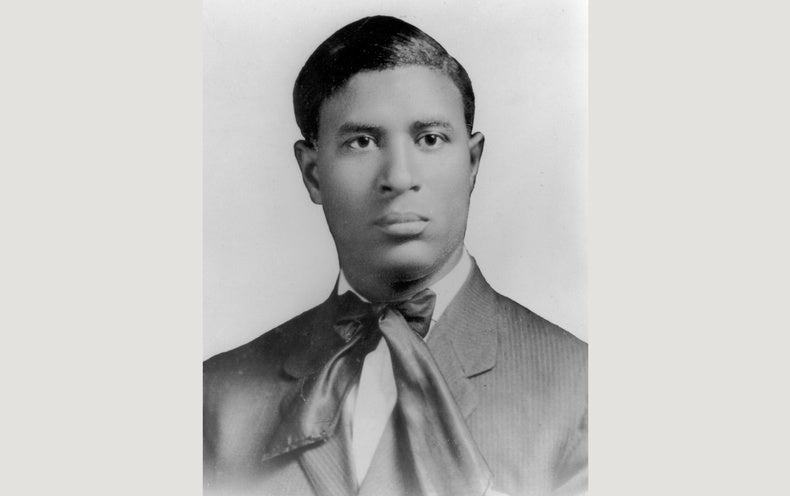It was a long-held belief in the scientific community that only younger scientists made significant advances. Having developed his theory of relativity at age 26, Einstein said, “A person who has not made his great contribution to science before the age of 30 will never do so.” Although there have been many noted scientists in their 40s and beyond, these are five who accomplished their important discoveries at a young age.
1. Lawrence Bragg (1890-1971)
(Credit:Nobel foundation, Public domain, via Wikimedia Commons)
At 25 years old, Australian scientist Lawrence Bragg became the youngest person ever to receive a Nobel Prize, although his groundbreaking research began when he was only 22. In 1915, he and his father were jointly awarded the Nobel Prize in physics for their work in X-ray crystallography. His research revealed that X-rays are diffracted based on the crystal’s atomic structure.
The area of X-ray crystallography continues to impact the fields of chemistry, physics and medicine —and is still used to study crystalline atoms. Building on Bragg’s work, other scientists have been awarded Nobel Prizes using x-ray crystallography in their research.
2. Subrahmanyan Chandrasekhar (1910-1995)
(Credit:Startchild Project NASA, Public domain, via Wikimedia Commons)
You may not know the name, but Subrahmanyam Chandrasekhar was a brilliant Indian-American scientist. An astrophysicist, his research at 19 years old eventually led to a Nobel Prize many years later, in 1983. During his research, it was known that stars eventually became unstable, collapsed in on themselves, and became what is known as a “white dwarf.”
Chandrasekhar discovered that white dwarfs must have a mass of 1.4 or less of the sun’s mass. They become a neutron star or a black hole if it’s higher. The point at which a star’s end product is determined is called “The Chandrasekhar Limit.”
3. Galileo Galilei (1564-1642)
(Credit:Prachaya Roekdeethaweesab/Shutterstock)
Galileo contributed much to the world of science; one of his most important achievements was improving the telescope and becoming the first person to study space with it. This led to his discovery that craters existed on the moon.
But one of his most important scientific contributions occurred when he was 19. Galileo developed an accurate method to weigh the density of objects using a counterweight. His discovery — hydrostatic balance, has current applications in astrophysics, gemology and atmospheric modeling.
Read More: Yes, Galileo Actually Said That
4. Sir Isaac Newton (1643-1727)
(Credit:Prachaya Roekdeethaweesab/Shutterstock)
Although best known for the concept of gravity — which he discovered at only 23 years old — Sir Isaac Newton impacted scientific innovation in additional ways. At 19, he developed calculus, which was a new approach to math at the time. And in his mid-20s, he had two major scientific breakthroughs. He invented the first reflecting telescope, using a mirror. He also significantly advanced the field of physical optics.
Using a prism, he ascertained the composition of white light (sunlight) and discovered the color “spectrum,” — a word he created. Newton’s book Principia, which detailed the three laws of motion, is considered one of the greatest scientific works ever written.
5. Blaise Pascal (1623-1662)
(Credit:Marzolino/Shutterstock)
Known to be a prodigy in math and science, Blaise Pascal showed remarkable intellect from early childhood. At 16 years old, he published a mathematical treatise. A few short years later — to aid his father’s work as a tax collector — Pascal created the first successful mechanical calculator. He called it the “Pascaline,” which was a predecessor to what eventually became the modern computer.
He was also instrumental in fluid mechanics, creating “Pascal’s Law.” His research in this area led him to create the syringe and establish the foundation for the hydraulic press.














